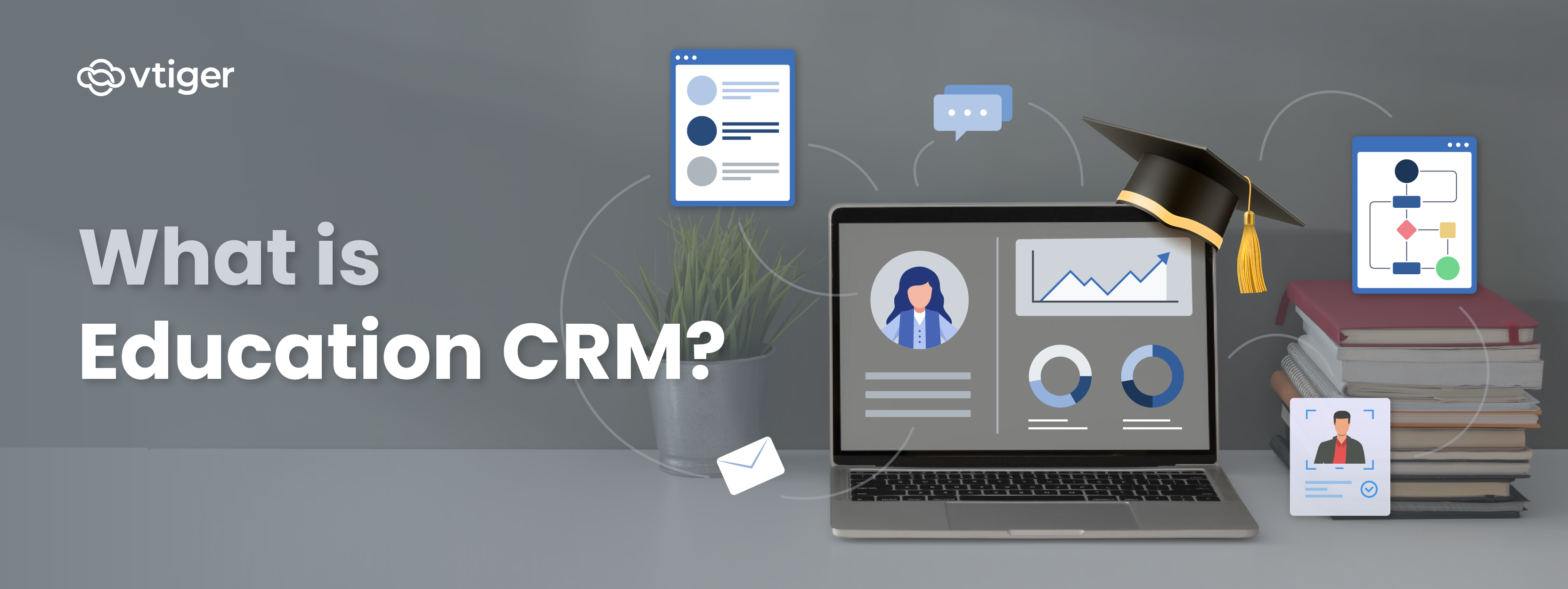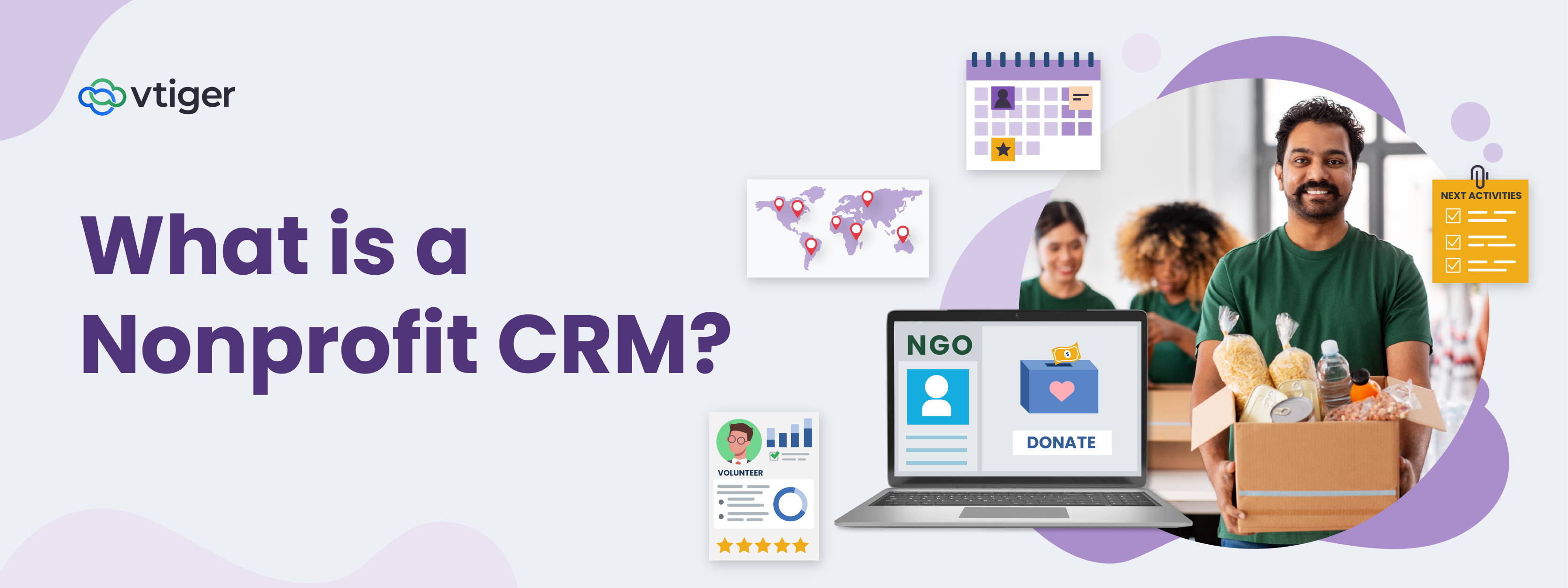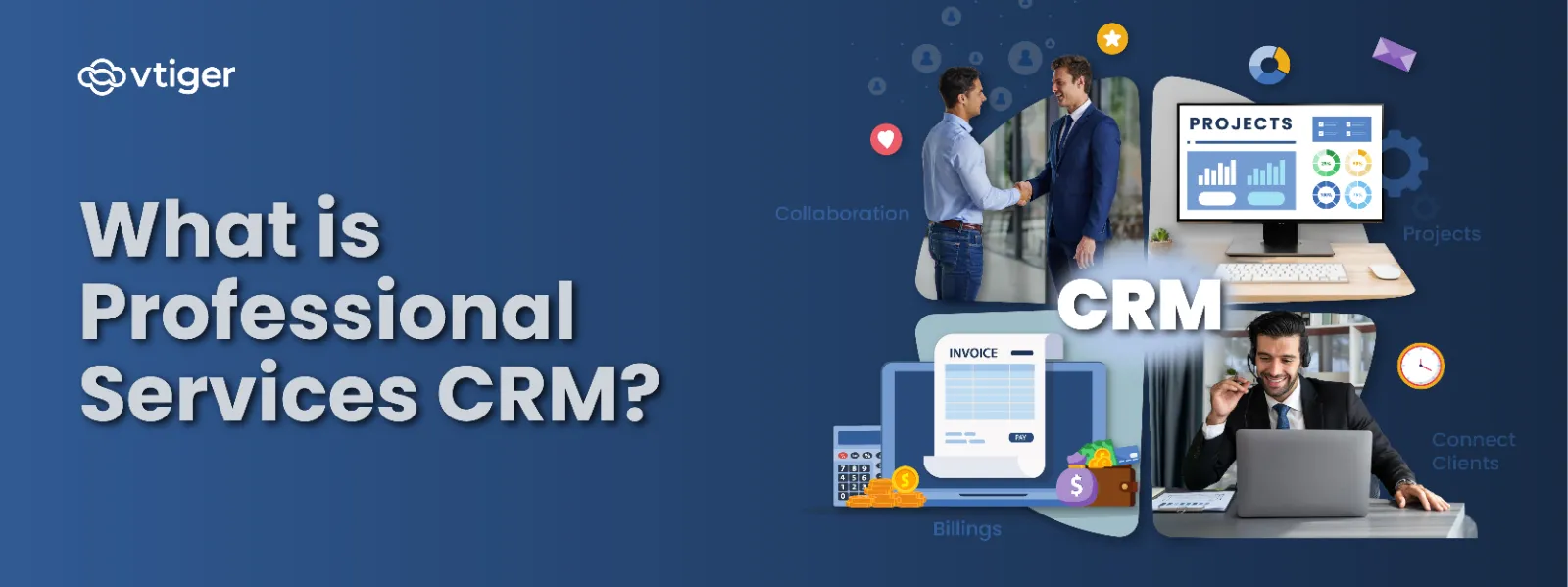What is a CRM for Higher Education?
Educational institutions are increasingly turning to Education CRM systems to handle rising admission volumes, increased student engagement demands, and competitive pressures.
According to Elvis ERP, schools using education CRM experienced a 15% increase in completed applications and a 20% improvement in student retention in the first year of adoption. Read this blog to learn more about Education CRM.
Why is a CRM Important?
An Education CRM plays a critical role in modernizing how institutions manage admissions, student engagement, and stakeholder relationships. In an era where personalized digital experiences shape student expectations, educational institutions can no longer rely on manual enquiry handling or disconnected databases.
A CRM centralizes every interaction, like enquiries, applications, communications, and alumni activities, into a single, unified database, ensuring that no lead or existing student query is overlooked.
According to Elvis ERP, institutions adopting CRM systems reported a 30% increase in alumni fundraising success and a 25% rise in parent engagement, emphasizing its role beyond admissions.
Key Reasons to Use an Education CRM
- Higher Enquiry Conversions: Centralized enquiry pipelines with automated lead scoring and routing accelerate response times improve application completion rates by 15%.
- Improved Student Retention: Predictive analytics identify at-risk students, while automated follow-ups and personalized academic updates drive a 20% higher retention rate.
- Data-Driven Recruitment: Campaign performance reports help allocate budgets to high-performing lead sources, optimizing recruitment spends.
- Operational Efficiency: Automating routine tasks such as fee reminders, follow-ups, and document verification frees up staff to focus on curriculum planning and research collaborations.
- Enhanced Stakeholder Relationships: Personalized communication with alumni, parents, and students strengthens institutional reputation and loyalty.
The education sector’s move toward data-driven enrollment strategies makes CRM adoption a strategic necessity for sustainable growth.
Features of an Education CRM
An Education CRM is designed to manage the complete student lifecycle, from the first enquiry to alumni engagement. According to Salesforce Education Cloud, institutions using education CRMs have seen up to a 37% increase in enrollment efficiency and a 26% improvement in student satisfaction. Below are the core features that enable this:
Application and Enquiry Management
A CRM captures enquiries from multiple sources, including websites, social media ads, education fairs, and referral partners. MarketsandMarkets reports that automation in admission workflows can reduce manual processing time by 30–40%. Automated enquiry routing ensures the right counsellor responds quickly, while lead scoring helps prioritize high-quality prospects. Application forms, document submissions, and payment tracking are stored in a single dashboard, minimizing the risk of lost or duplicate records.
Learner Communications
Personalized communication is essential for student engagement. A CRM automates emails, SMS, and WhatsApp campaigns, ensuring students receive timely reminders about deadlines, events, or scholarship opportunities. HubSpot Education Study shows that targeted communication campaigns can increase response rates by 29%. Communication history remains linked to each student profile, giving counselors full context during every interaction.
Integrations
A good CRM integrates with existing student information systems (SIS), learning management systems (LMS), and payment gateways. This seamless data flow eliminates repetitive manual updates and ensures staff have real-time access to academic performance, fee status, and attendance. Nucleus Research found that integrated CRM systems can improve staff productivity by 15–20%, as they spend less time switching between platforms.
Analytics and Reporting
Education CRMs provide detailed analytics dashboards that track enquiry sources, campaign performance, and conversion rates. Predictive analytics highlight which students are at risk of dropping out, allowing timely intervention. Gartner data suggests that institutions using predictive retention models see up to a 20% improvement in student retention. Customized reports also help administrators allocate marketing budgets more effectively.
| Further Reading Suggestions | ||
| What is a CRM | Open Source CRM | Sales CRM |
| Evolution of CRM | Analytical CRM | What is a Recruitment CRM |
| What is AI CRM | Mobile CRM | What is the CRM Process |
Benefits of CRM for Higher Education
A well-implemented Education CRM reshapes how colleges and universities operate by creating a structured, data-driven approach to decision-making, student engagement, and resource management. Below are the key benefits of CRM for higher education and their impact on the Institute’s workflow
Unified View of Constituent Information for Higher Education
Most educational institutions deal with fragmented data spread across student information systems (SIS), learning management systems (LMS), email tools, and financial software. An Education CRM consolidates all of this, creating a single profile for each student, parent, or alumni. This unified record includes admission history, communication logs, course progress, fee payments, and even event participation.
Having all this information in one place allows departments to collaborate effectively. For example, marketing teams can target alumni for fundraising campaigns, while academic teams can view the same alumni’s academic and extracurricular history for recognition events. Nucleus Research found that institutions using unified CRM databases reported a 22% faster response time when handling student or parent queries.
CRM Lowers Total Cost of Ownership
Manual administrative work and disconnected systems often lead to high operational costs in higher education. A CRM reduces these expenses by automating repetitive tasks such as fee reminders, scholarship notifications, and alumni outreach.
Unlike traditional software that requires separate tools for admissions, communications, and reporting, a single CRM handles all of these functions. This consolidation reduces licensing fees and IT maintenance costs. MarketsandMarkets highlights that institutions adopting integrated CRMs save 15–20% annually on operational costs because they require fewer standalone systems and less manual data entry.
Cloud-based CRMs minimize the need for extensive on-premise IT infrastructure, making them more cost-effective for institutions with limited budgets.
CRM Improves the Student Experience
Personalized support is now a key factor in student satisfaction. CRMs enable universities to track student interactions across different channels and respond proactively. For instance, if a student consistently misses assignment deadlines, the CRM can trigger an automated alert for academic advisors to offer timely assistance.
Predictive analytics within CRMs also help identify at-risk students early, allowing institutions to provide tailored interventions. Gartner reports that colleges using predictive engagement models have achieved retention rates up to 25% higher. Timely updates on course changes, exam schedules, and internship opportunities via automated communication ensure students feel informed and supported throughout their academic journey.
CRM Empowers Faculty & Staff
A CRM is not just for admissions or marketing teams. Academic staff and administrative personnel benefit from access to centralized information, enabling faster decision-making. Faculty can view student academic history, attendance patterns, and engagement levels before advising sessions, making their guidance more relevant and personalized.
For administrative teams, workflow automation simplifies tasks such as document verification, certification requests, and grievance tracking. IBM research shows that education CRMs can improve staff productivity by up to 18%, as teams spend less time on manual data handling and more time engaging directly with students. Moreover, role-based access ensures staff see only the data they need, improving efficiency and maintaining data security.
CRM Prepares Colleges and Universities for Whatever is Next
Higher education is becoming increasingly competitive, with growing demand for online programs, hybrid learning, and global student outreach. CRMs prepare institutions for these changes by offering scalable and flexible features.
For example, marketing automation helps institutions run targeted digital campaigns for international students, while integrations with virtual classroom tools ensure smooth online course delivery. CRMs also provide real-time dashboards for leadership teams to track enrollment trends, helping them adjust recruitment or scholarship strategies quickly.
A future-ready CRM also supports alumni engagement, which is becoming a critical source of funding and brand advocacy. By tracking long-term alumni, universities can maintain meaningful relationships and improve fundraising success rates.
How to Select the Best CRM for Higher Education
The right Education CRM aligns technology with institutional goals and prepares for future growth. Below are a few of the operational considerations higher education stakeholders must take:
1. Select an Appropriate Deployment Model
Cloud-hosted CRMs are increasingly favored because they offer remote access, automatic software updates, and lower infrastructure costs. Institutions demanding stricter data ownership may still opt for on-premise setups, though they require skilled IT staff for upkeep. Gartner confirms that over 70% of higher education institutions now choose cloud CRM systems for their scalability and reduced operational burden.
2. Prioritize Seamless Academic System Integration
The CRM should connect effortlessly with Student Information Systems (SIS), Learning Management Systems (LMS), fee payment solutions, and marketing automation tools. CRMs with open API frameworks enable real-time data exchange, preventing information silos and improving admissions management.
3. Facilitate Multi-Channel Communication
A good capable CRM must handle outreach across email, SMS, WhatsApp, and social platforms. Automated yet personalized messaging ensures faster responses to student inquiries, smoother event reminders, and well-timed follow-ups, creating a consistent experience for applicants.
4. Use Analytics and Predictive Intelligence
Institutions should select CRMs with live dashboards to analyze lead conversion rates, campaign performance, and student engagement levels. Predictive models can forecast admission trends and identify students who need intervention early. Nucleus Research suggests institutions adopting predictive analytics can increase enrollment conversion by 18%.
5. Opt for User-Friendly and Mobile-Ready Interfaces
Staff across admissions, counseling, and recruitment should easily navigate the system without extensive training. A mobile-responsive CRM allows teams to capture leads and follow up instantly during education fairs or campus recruitment drives.
6. Choose a Scalable and Customizable Solution
The CRM should grow alongside institutional expansion. Look for role-based permissions, adaptable workflows, and dedicated modules for admissions, alumni tracking, and placement management to future-proof operations.
7. Evaluate Vendor Support and Training Quality
For colleges without dedicated IT resources, selecting a vendor that offers implementation assistance, hands-on training and responsive support teams is critical for system adoption and long-term stability.
Elevate your admission process with Vtiger CRM
Vtiger CRM brings enquiry management, application tracking, and automated follow-ups into one unified platform. It consolidates data from online forms, education fairs, and social campaigns, ensuring every lead is nurtured with personalized communication through WhatsApp, SMS, and email.
The platform integrates with SIS and LMS systems, offering a real-time view of every applicant’s progress. Its cloud-based infrastructure ensures scalability for growing institutions, while intuitive dashboards help admission teams focus on improving conversion rates and response times instead of manual data entry.
Conclusion
The use of education CRM platforms reflects a broader shift in how institutions manage relationships across the student lifecycle. As higher education moves toward data-informed decision-making and student-centric operations, CRM systems are becoming integral to academic administration rather than being limited to admissions teams.
With growing emphasis on personalized student support, outcome tracking, and alumni-driven fundraising, the trend indicates that CRMs will soon evolve into institution-wide engagement hubs. For colleges and universities aiming to stay relevant in an era of competitive enrollment and hybrid learning, understanding these changes is now as important as selecting the right technology itself.
Frequently Asked Questions
What is education CRM and why is it important for educational institutions?
Education CRM is designed to manage every stage of a student’s journey, from the first inquiry to alumni engagement. For institutions, it solves admission-related bottlenecks, handles growing inquiry volumes, and ensures better student engagement in a competitive education market.
How can an education CRM help institutions increase admissions and streamline enrollment?
Consolidating leads from multiple channels into one database enables timely follow-ups and targeted communication. Automated workflows reduce manual tracking, while application monitoring improves conversion rates by keeping prospects engaged until enrollment.
What are the key features to look for in an education CRM for schools and colleges?
An ideal solution should provide accurate lead tracking, multi-channel communication (email, SMS, WhatsApp), real-time analytics, student information management, and easy integration with existing systems like SIS or LMS for smooth data exchange.
How can a CRM improve student engagement and retention in educational institutions?
It identifies disengaged or at-risk students using behavioral and communication data. Personalized updates, academic reminders, and consistent follow-ups help create meaningful interactions that encourage students to stay connected with the institution.
What is the difference between a student management system (SMS) and an education CRM?
An SMS focuses on operational details such as attendance, grades, and timetables. An education CRM, however, manages relationships by nurturing student inquiries, improving communication, and maintaining ongoing interactions even after enrollment.
What are the challenges of implementing an education CRM, and how can they be addressed?
Institutions face issues such as poor data integration, limited technical expertise, and staff resistance. A phased rollout, vendor-led training, clear ROI measurement, and adherence to the Digital Personal Data Protection Act (DPDPA) help overcome these challenges.
How can CRM be used effectively for educational marketing and recruitment?
Targeted campaigns, segmented student lists, and automated follow-ups allow institutions to reach the right audience. Campaign performance insights guide marketing spend, improving lead quality and boosting admission numbers.
How can educational institutions ensure data privacy and security when using a CRM?
Strict compliance with DPDPA guidelines is crucial. Institutions must gain valid consent for data collection, deploy encrypted storage, monitor data access, and set up prompt breach notification protocols.
What are the long-term benefits and ROI of investing in an education CRM?
Institutions achieve consistent admission growth, better resource allocation, and stronger alumni relationships. Over time, data-driven decision-making and automated processes reduce operational costs and improve institutional reputation.



